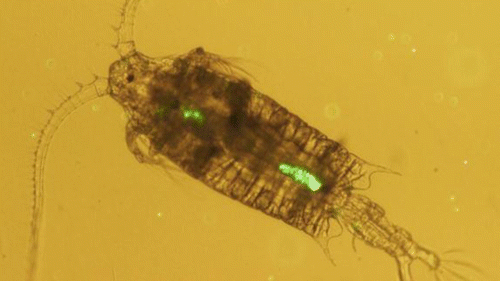Previous studies based on the climate models participating in the Coupled Model Intercomparison Project (CMIP) have suggested an increase in the frequency of extreme El Niño events in the 21st Century in response to increasing greenhouse gases. Several studies have attributed these shifts in El Niño frequency and amplitude to the projected changes in the... Continue Reading →
New aircraft-based observations confirm the role of the Southern Ocean as a significant carbon sink
Ship-based CO2 flux estimates of the contemporary air-sea flux of CO2 showed that the Southern Ocean (south of 35oS) plays an important role as a significant carbon sink, with a net uptake at the rate of −0.8 ~ −1.0 Pg C/year (Takahashi et al., 2009; Landschützer et al., 2014) largely consistent with climate model-based estimates... Continue Reading →
Increasing river alkalinity slows ocean acidification in river-dominated ocean margins
Although ocean acidification (OA) is mainly driven by the ocean uptake of anthropogenic carbon dioxide from the atmosphere, multiple factors including changes in ocean temperature, biological processes, and river discharge influence its temporal progression. In a new paper accepted in the Geophysical Research Letters, a team of researchers from the Northern Gulf Institute of the... Continue Reading →
Arctic Ocean is experiencing dramatic weight loss due to increasing freshwater storage
The freshwater cycle in the Earth System is a delicate balance between the net loss (i.e., evaporation > precipitation) in the warm tropical-subtropical oceans, the net gain (i.e., precipitation > evaporation) in the cold polar oceans, and the net poleward transport by the atmosphere. These processes maintain the tropical-subtropical oceans salty and the polar oceans... Continue Reading →
Zooplanktons eat microplastics? Yes, they do and it may reshape the global ocean-biogeochemistry
Plastics are now widely distributed in the global ocean, serving as a new and serious contaminant for marine ecosystems. For instance, ingestion of small plastic detritus ( 0.1 μm ~ 5 mm), “microplastics” by fish, mussels and seabirds has been widely reported. A recent study (Cole et al., 2013) used fluorescence bioimaging techniques to show... Continue Reading →
Why does the Arctic temperature rise faster in the cold season?
The Arctic warming response to increasing greenhouse gas is substantially greater than the rest of the globe. It has been suggested that this phenomenon, commonly referred to as Arctic amplification, and its peak in boreal fall and winter result primarily from the so-called lapse-rate feedback, which is associated with the vertical structure of tropospheric warming,... Continue Reading →
Increasing influence of warm and salty Atlantic water on the cold season Arctic sea ice melting
The Arctic Ocean in the upper 100 - 200 m is typically characterized by a cold and fresh surface mixed layer and a layer of rapidly increasing salinity with depth, as known as halocline, separating the surface mixed layer from the warm and salty Atlantic water at depth. Due to large vertical density gradient and... Continue Reading →
What caused the abrupt reduction of the South Indian Ocean heat & sea level in 2014–2016 and the ensuing quick recovery?
A decade-long increase of the basin-wide sea level and heat content in the subtropical southern Indian Ocean (SIO) during 2004–2013 ended abruptly, immediately following the onset of the strong 2014–2016 El Niño. Interestingly, this unprecedented drop of the SIO heat quickly recovered during the weak 2017–2018 La Niña. A study recently published in Science Advances... Continue Reading →
Accelerated warming of the Antarctic interior caused by moist air intrusion from the Weddell Sea
In a new study published in Nature Climate Change, Clem and colleagues reported that the South Pole has experienced a record-high warming of 1.81 ± 1.02°C during the last 30 years, three times larger than the global average. They used observational records to show that the recent warming of the South Pole, which started around 2000 following... Continue Reading →
Compensating change in the Indo-Pacific MOC in response to the Atlantic MOC slowdown
The climate model simulations forced with increasing anthropogenic greenhouse gases consistently project a robust decline of the Atlantic Meridional Overturning Circulation (MOC) and a strengthening of the Southern Hemisphere westerly winds, which may in turn result in an increase in the Southern Ocean MOC. In a research article recently accepted in the Journal of Physical... Continue Reading →










